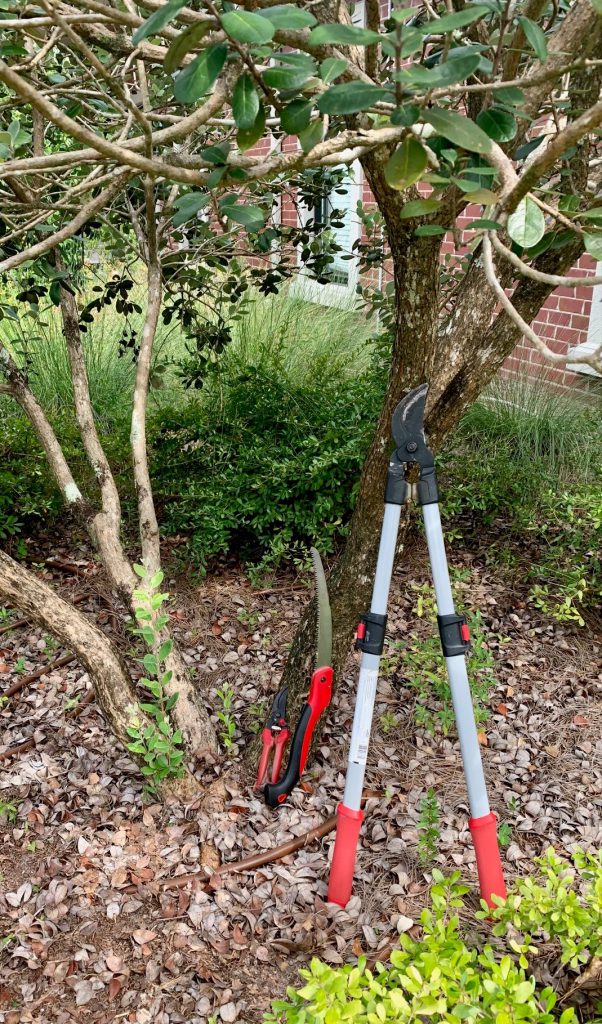Anyone can prune but not everyone prunes correctly. In order to prune correctly, you need to understand how plants respond to pruning.

When a pruning cut is made on a stem or limb, new growth will develop just a few inches below the cut. This is because of a hormone that is produced in the terminal bud (the bud at the end of a branch or twig). This hormone prevents dormant buds located directly below the terminal bud from growing. So, when you routinely shear plants, a lot of dense, new growth will be produced near the outer portions of the plant. This eventually results in less light reaching the interior portions of the plant, foliage within the canopy becomes sparse and the plant appears stemmy or hollow.
Thinning generally is a better method of pruning most shrubs. Thinning is cutting branches back to a lateral branch, a lateral bud or the main trunk. Basically, a thinning cut is the complete removal of a branch or stem for the purpose of thinning or opening up the plant. Thinning encourages new growth within the interior portions of the plant, reduces size and provides a fuller, more natural looking plant compared to plants that are routinely sheared.
Keep in mind the desired results when pruning. If you plant a row of shrubs that will serve as a hedge or screen, begin pruning them the same year that you plant. Many times, people wait several years before pruning a newly planted hedge Doing so can result in little growth at the base of the plants, which means a privacy hedge that can be seen through. Because of the fact that new growth on plants only occurs a few inches below the cut, you should begin pruning early to encourage a compact growth habit.
Pruning time varies among plants. Plants that are not grown for their showy flowers such as holly, boxwood and privet can be pruned during late winter, spring and summer months. Avoid pruning during fall or early winter because the new, tender growth produced as a result of pruning will be subject to cold injury.
Plants that bloom before May such as azaleas, forsythia, spirea and climbing roses should be pruned shortly after they bloom. It is best to avoid pruning plants in this category later than July because they set flower buds in the fall.
Plants that bloom after May such as crape myrtle, gardenia, bush roses and abelia can be pruned just prior to spring growth in late February or early March.
Avoid severely pruning junipers, cedar, arborvitae and other narrow-leaf evergreen plants because it may cause them to die outright.
- Nuisance Gnats abound in Northwest Florida this spring - June 26, 2025
- Watering to Establish a New Lawn - May 15, 2025
- Sweet Onion and Strawberry Success, a Matter of Variety and Timing - April 10, 2025
